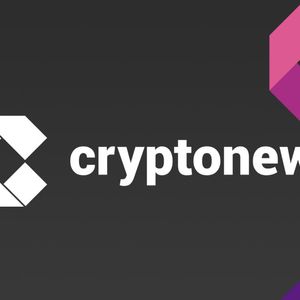
MetaMask has launched social login functionality, allowing users to create and recover self-custodial wallets using Google or Apple accounts, eliminating the need to manually manage traditional 12-word Secret Recovery Phrases while preserving complete user control over private keys. The feature combines familiar Web2 authentication with advanced cryptographic techniques, including Threshold Oblivious Pseudorandom Functions and Shamir Secret Sharing to ensure no single entity can access wallet credentials. You can now use Google or Apple ID to create a MetaMask wallet and login with one click. Creating, restoring, and logging into wallets is now easier than ever. pic.twitter.com/Z3cew3jBZf — MetaMask.eth (@MetaMask) August 26, 2025 Two-Step Setup Maintains Security While Eliminating Seed Phrase Management Users sign in with Google or Apple credentials and create a unique password, which together unlock locally-generated Secret Recovery Phrases without compromising self-custody principles. MetaMask emphasizes that neither the company nor social login providers can retrieve private keys or recovery phrases independently, maintaining the wallet’s decentralized security model. “ No single entity, not even MetaMask, can access all of the pieces needed in order to retrieve your SRP, preserving the self-custodial nature of your wallet ,” the company said. The innovation addresses common user errors, including lost seed phrases and inadequate backup practices, which cause significant crypto losses among mainstream users. Social login enables seamless cross-device wallet restoration while requiring both valid social authentication and user-created passwords for recovery. MetaMask joins other major wallets, including Phantom and Trust Wallet, in offering social authentication options, with the feature powered by Web3Auth infrastructure acquired by Consensys in June 2025. Sacrificing Security for Simplicity? MetaMask’s implementation uses distributed key management to split encrypted wallet data across independent server nodes, ensuring no single party controls sufficient information for unauthorized recovery. The system generates random encryption keys on the client side and distributes them using Shamir’s Secret Sharing among multiple key-share holders. Source: GeeksForGeeks Recovery requires both valid social login tokens and user passwords to reconstruct encryption keys. Server-side rate limiting prevents brute force attacks, while encrypted Secret Recovery Phrases remain stored as ciphertext, requiring multiple authentication factors for decryption. The password becomes critical as MetaMask cannot recover lost passwords, making strong password creation essential for wallet security. Users maintain the option to export traditional 12-word recovery phrases as a backup, providing fallback access that is independent of social accounts. However, some security trade-offs include dependency on Google or Apple account access and potential privacy implications from sharing OAuth metadata. The system requires the continued operation of MetaMask’s key-share servers and social login providers, creating availability dependencies that are absent from traditional seed phrase storage. Fortunately, technical reviews also indicate that the approach reduces single-point failures common with handwritten seed phrases, while introducing different risk vectors related to password management and identity provider reliability. The cryptographic design preserves self-custody principles through client-side encryption and distributed key architecture. Stablecoin Launch Positions MetaMask as Full-Service Financial Platform MetaMask announced plans for MetaMask USD (mUSD) , making it the first self-custodial wallet to issue a native stablecoin integrated across its ecosystem of decentralized applications. The token will launch on Ethereum and Linea networks with plans for real-world payment integration through the MetaMask Card by year-end. The stablecoin initiative builds on governance proposals that have been circulating since August , outlining partnerships with Stripe for payment infrastructure and the M⁰ network for decentralized issuance. MetaMask launches its native stablecoin MetaMask USD (mUSD) today — the first self-custodial wallet to issue one. #DeFi #Stablecoins https://t.co/auj9krnk2i — Cryptonews.com (@cryptonews) August 21, 2025 mUSD aims to serve as a base currency across MetaMask’s 30 million-user ecosystem, while supporting DeFi protocols for lending and yield opportunities. Development coincides with growing corporate stablecoin adoption following the passage of the GENIUS Act , which established federal regulatory frameworks that distinguish stablecoins as payment tools rather than investment products. Major corporations, including Western Union , Interactive Brokers , and Remitly , have announced plans to integrate stablecoins for payment modernization. The stablecoin market has expanded to over $250 billion in capitalization, with Federal Reserve Governor Christopher Waller acknowledging that 99% of stablecoin value links to U.S. dollars. This positioning could help maintain dollar dominance as a global reserve currency through increased international accessibility. Looking forward, MetaMask’s technical and stablecoin updates aim to target mainstream adoption by reducing technical barriers while maintaining self-custody principles that distinguish cryptocurrency from traditional banking services. Users will access integrated financial services, including payments, swaps, and cross-chain bridging, directly within the wallet interface, while maintaining complete control over their assets. The post MetaMask Adds Google and Apple Login to Simplify Self-Custodial Wallet Access appeared first on Cryptonews .
